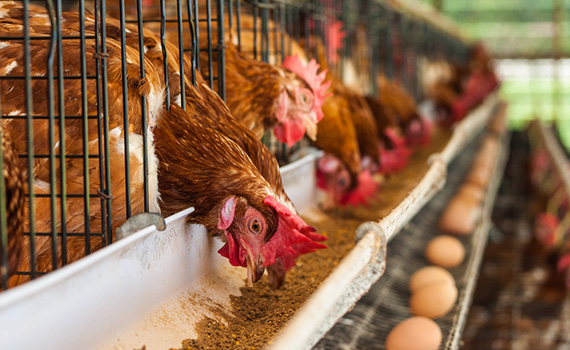Judicious antibiotic use: What does it mean in poultry?

By
Dennis P. Wages, DVM, Dipl. ACPV
Professor, Poultry Health Management
Department of Population Health and Pathobiology
College of Veterinary Medicine — North Carolina State University
Back in 2012, FDA finalized a document called “The Judicious Use of Medically Important Antimicrobial Drugs in Food-Producing Animals.”[1] Otherwise known as Guidance for Industry #209, it presented the agency’s “current thinking” on the topic and sought to limit the use of medically important antimicrobials in poultry and livestock production. It also encouraged more veterinary involvement.
The following year, FDA published additional guidelines for voluntarily implementing these measures over 3 years — a period that ends December 2016. In that document, FDA said it would “monitor progress to assess whether these charges are being adopted” voluntarily or whether “further action” would be needed.[2]
What exactly does “judicious antibiotic use” mean? And what steps should poultry producers and veterinarians be taking to comply with judicious-use principles?
The American Veterinary Medical Association, the American Association of Avian Pathologists and the FDA’s Center for Veterinary Medicine define judicious antibiotic use as “optimizing therapeutic efficacy while minimizing resistance for the protection of both animal and public health.”
Most of us in veterinary medicine believe this is a sound concept and agree with the spirit of the definition. But as we all know, taking these words and applying them to, say, a house of 25,000 broilers is not without challenges. If you’re charged with raising poultry without antibiotics, that makes the decision to use antibiotics even more difficult.
To me, the most effective way to curtail antibiotic use in food animals is by establishing intensive preventive disease practices, which may include vaccination and certainly the use of best-management practices. As we all know, however, disease still occurs and antibiotic treatment is often necessary to preserve the health and welfare of poultry flocks.
My perspective
It’s good to have definitions and guidelines for judicious use, but to implement them in the field requires an understanding of the disease being treated. It’s paramount that when antibiotic therapy is used, it’s for a specific disease, for a specific time period and is initiated by a veterinarian who understands and considers the farm condition, farm management, vaccination program and coccidiosis-control strategy.
Furthermore, judicious use requires a thorough knowledge of the antibiotic being used — not just its labeled indications but also its spectrum of activity, pharmacokinetics, the appropriate dosage as well as knowledge of any cross-resistance with other antibiotics.
Today, most therapeutic antibiotics for poultry are administered in drinking water — a “volumetric approach.” That is, a known quantity of antibiotic is added to a proportioner or to medication tanks and dosed based on the flock’s water consumption. Because the total uptake of antibiotic hinges on each bird’s water consumption, variation in antibiotic uptake is inevitable.
Feed ingredients such as sodium, potassium and bakery byproducts as well as environmental temperature tend to influence water consumption. Any increase or decrease in water consumption may affect antibiotic uptake. The impact of this variation is most apparent with tetracyclines, erythromycin, tylosin or penicillin, which are absorbed systemically and used for systemic disease such as septicemia or airsacculitis. For antibiotics such as bacitracin that are typically used to prevent or treat enteric disease, variation in water consumption may have less effect on efficacy.
Applying principles to practice
To help put all this in perspective, I’d like to discuss my interpretation of judicious antibiotic use as it relates to one common enteric disease: necrotic enteritis (NE), caused by Clostridium perfringens.
Water medications
As we all know, NE is one of the most common and costly diseases encountered in broilers. We need to prevent and control NE, but sometimes these measures fail and an acute NE outbreak occurs. Treatment must be initiated to prevent animal suffering as well as substantial economic losses.
First and foremost, producers must get an accurate diagnosis for NE based on clinical signs, mortality and, more importantly, necropsy results. Once the diagnosis is confirmed by a veterinarian, there are a variety of therapeutic antibiotics that could be used through the drinking water, including bacitracin, tylosin, lincomycin, penicillin or erythromycin.
When I recommend water administration of therapeutic antibiotics, it’s based on historical information from the integrator, taking into account what’s been used on the farm to prevent NE. I want to avoid using classes of antibiotics that have been used in feed to control the disease. For instance, if in-feed bacitracin has been used earlier in the flock’s life cycle, I don’t want to use bacitracin to treat an acute outbreak.
When virginiamycin has been used in feed for NE control, then I usually don’t choose a macrolide class of antibiotic such as tylosin or erythromycin for treatment because cross-resistance has been demonstrated between the macrolides and virginiamycin.
Likewise, if tylosin in feed has been used for NE control, then erythromycin would not be a good choice as it is also a macrolide and can demonstrate cross resistance to tylosin. Therefore, if bacitracin was used in the feed to increase growth rate and feed conversion or for NE prevention or control, I would prescribe erythromycin, tylosin or lincomycin, depending on the history of the farm and what has worked in the past. Likewise, if virginiamycin or tylosin has been used in the feed for NE control, I would select bacitracin, lincomycin or penicillin, with bacitracin being my first antibiotic of choice.
If an ionophore was used to prevent coccidiosis, I would not choose erythromycin for treating an acute NE outbreak because this could exacerbate ionophore toxicity in broilers, especially during periods of heat stress. This complication is more commonly seen in turkeys, but I’ve observed the same problem in broilers during summer months.
Even though penicillin is one of the oldest antibiotics we have, it may be of value as a water treatment for some acute NE infections, especially if it hasn’t been used historically in an integrated operation.
However, some of the above-mentioned NE water-treatment choices (i.e., tylosin, erythromycin) constitute extra-label use of these antibiotics and would need to adhere with prescription and extra-label use guidelines established by the Animal Medicinal Drug Use Clarification Act. The more recent regulations seek to increase veterinary oversight of medically important, water-administered antibiotics, which might ultimately be moved from an “over-the-counter” to “prescription only” use category.
Feed medications
For NE prevention or control, feed-grade antibiotics can be used at pre-determined times during the growout cycle. The most common feed-grade antibiotics that can be used for this reason are bacitracin methylene disalicylate and virginiamycin.
Bacitracin does not require a Veterinary Feed Directive (VFD) for use in feed because it is not considered medically important to humans by FDA. However, if bacitracin is used in combination with another medication considered medically important, then a VFD would be required.
Virginiamycin is on FDA’s list of medically important antibiotics, even though there are currently no streptogramin antibiotics used in humans. When used at 20 grams per ton of feed to help prevent NE, it will require a VFD as of December 2016.
Tylosin in feed is labeled only for growth promotion, but I’ve used it in the past for NE control at the growth promotion level. Therefore, without an indication for NE, tylosin won’t be available to us in the future for managing this common enteric disease.
If ionophores or anticoccidial chemicals that “leak” are used to control coccidia, I would use feed-grade antibiotics when oocyst production is higher and predisposes broilers to NE.
I recommend a feed-grade, NE-prevention program from day 21 through day 35, depending on the age broilers will be processed. In small-bird programs, I may stop using the feed-grade antibiotic as early as 32 days. For a large-bird program, I may extend the length of time antibiotics are fed to 40 or 42 days, especially if gangrenous dermatitis is an issue. The antibiotic dosages I prescribe are those labeled for control of NE, not increased growth rate or feed conversion.
For broilers vaccinated against coccidiosis, the feed-grade program for NE is usually initiated earlier than for broilers that receive in-feed anticoccidials. This is because as vaccine oocysts cycle, oocyst replication in the intestinal epithelial cells can predispose the intestines to Clostridium perfringens infection, which is the cause of NE. Proper application of the coccidiosis vaccine is important to reduce this occurrence. NE can occur as early as 12 days of age and extend through 3 weeks of age, depending on the vaccine used. Immunity should be achieved by around 4 weeks of age.
The goal of this program is to minimize any vaccine reaction that occurs and prevent NE by controlling Gram-positive organisms in the intestines. I would use either bacitracin or virginiamycin in a starter program until 21 to 24 days of age.
Non-antibiotic alternatives
We all know the broiler industry is market-driven, and the future use of feed-grade antibiotics is in question. Marketing tactics by some food vendors and consumer demand are pressuring integrators to constantly evaluate the use of antibiotics. Consequently, I recommend integrators start exploring non-antibiotic alternatives for managing coccidiosis and NE. These would include prebiotics, probiotics, organic acids and immune modulators.
In the meantime, the industry and poultry veterinarians will adapt to recommended changes in antibiotic use. Judicious antibiotic use, which I’d venture to say most of us have been practicing all along, is a complex topic that can’t be measured by words or, for that matter, by the amount of antibiotics used. The discussion needs to focus on using the right antibiotic at the right time for the right reason, and on animal health and welfare.
[1] Guidance for Industry #209. The Judicious Use of Medically Important Antimicrobial Drugs in Food-Producing Animals. April 13, 2012.
Accessed August 28, 2015
[2] Guidance for Industry #213. New Animal Drugs and New Animal Drug Combination Products Administered in or on Medicated Feed or Drinking Water of FoodProducing Animals: Recommendations for Drug Sponsors for Voluntarily Aligning Product Use Conditions with GFI #209,
page 9. http://www.fda.gov/downloads/AnimalVeterinary/GuidanceComplianceEnforcement/GuidanceforIndustry/UCM299624.pdf Accessed August 27, 2015.
Posted on April 29, 2016
 We’re glad you’re enjoying
We’re glad you’re enjoying










